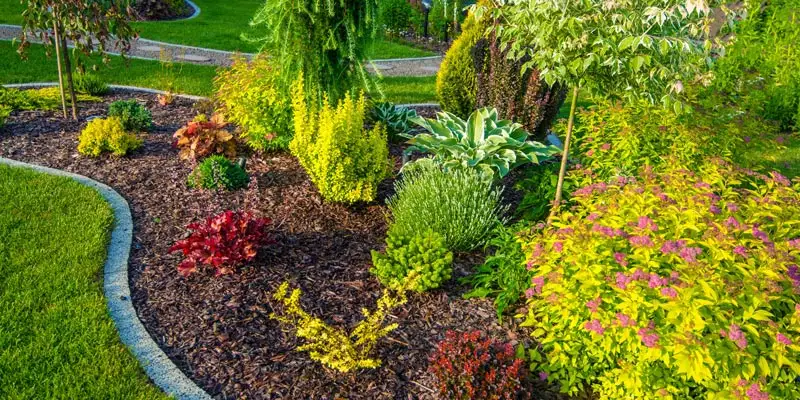Some Known Details About Landscape Design
Some Known Details About Landscape Design
Blog Article
Landscape Design - Questions
Table of ContentsThe Landscape Design StatementsThe Of Landscape DesignFacts About Landscape Design UncoveredFacts About Landscape Design Revealed
When making a household landscape, the most vital action is to put a plan on paper. Developing a plan of attack will certainly conserve you money and time and is more probable to result in a successful layout. A master plan is established with the 'style procedure': a detailed method that considers the environmental problems, your wishes, and the components and concepts of layout.The five steps of the layout procedure include: 1) carrying out a site stock and evaluation, 2) identifying your needs, 3) producing functional diagrams, 4) creating theoretical design plans, and 5) attracting a last layout plan. The initial three actions develop the aesthetic, practical, and gardening requirements for the layout. The last two actions then apply those needs to the development of the final landscape plan.
This is an important action for both plant choice and placement and finding family tasks and functions. It is necessary since the exact same climate problems that affect the plantstemperature, moisture, rainfall, wind, and sunlightalso influence you, the customer. The following step is to make a listing of your requirements and desiresthis helps you identify how your yard and landscape will be made use of.
The practical diagram is after that used to find the task rooms on the site and from this representation a theoretical strategy is created. The last action is a final style that includes all the hardscape and planting details that are needed for setup. Throughout the design process there are ten essential points to take into consideration: for plant option and activity place by considering what you want and require to help identify shapes and organize rooms by marking task locations and linking with components for both the atmosphere and the individual by making use of massing and layering techniques such as transition areas and centerpieces in the materials, the colors, and the surface structures for the growth and maintenance of plants by making use of lasting design practices A detailed inventory and evaluation of the site is essential to figure out the environmental problems for plant growth and the best use of the website.
The Best Strategy To Use For Landscape Design
The kind of soil identifies the nutrients and dampness readily available to the plants. It is always best to use plants that will certainly thrive in the existing dirt. Soil can be amended, modification is frequently costly and most times ineffective. Existing vegetation can provide hints to the dirt type. Where plants expand well, keep in mind the dirt conditions and utilize plants with similar growing requirements.

Sun/shade patterns, the quantity and length look at this now of exposure to sun or color (Figure 1), produce microclimates (sometimes called microhabitats) - Landscape Design. Recording website conditions and existing greenery on a base map will certainly reveal the place of microclimates in the yard. Plants typically fall under one or two of four microclimate categories-full sun, partial shade, shade, and deep color
The Best Strategy To Use For Landscape Design
Figure 1. Sun and color patterns. Credit: Gail Hansen, UF/IFAS It is important to keep in mind all the existing problems on an exact base map when doing the site supply (Number 2). Utilities such as power lines, sewage-disposal tanks, Extra resources below ground utilities and roof overhangs determine plant area. Use a land surveyor's plat of your residential or commercial property for the boundaries and place of your home.


Budget issues consist of the materials, initial setup prices and the on-going upkeep prices. Determine the time and cash you want to take into maintaining the plants and hardscape-be realistic about your objectives and ability. Figure 3. Current use areas. Credit Score: Gail Hansen, UF/IFAS Number 4. Recommended usage areas. Credit Score: Gail Hansen, UF/IFAS There are several landscape style styles- from basic to complicated, but it is useful to choose one to guide your plant and product option.
Several people find it handy to search in gardening publications and books for concepts. This is a good beginning, however understand that the yards in the images were chosen because they are superior examples. Consider the photos with a critical eye to gather ideas that you can adjust to your enthusiasm degree, your budget plan and your website.
Make a decision if you wish to open your backyard, close your backyard, or a little of both, to these views (Landscape Design). Simply put, do you want the yard to confine the area around you and connect mostly to your house, or do you want the yard to open views and look exterior, connecting my company to the environments? This will certainly provide you a beginning indicate think of a theme
The Basic Principles Of Landscape Design
Every garden should have a kind style, but not all yards have a design theme. Many domestic gardens have no certain design except to mix with the home by repeating information from the design such as materials, shade, and type.
In a form motif the organization and form of the areas in the yard is based either on the form of your home, the form of the locations between the residence and the residential property borders, or a favored shape of the homeowner. The type theme identifies the form and company (the design) of the areas and the links in between them.

Report this page